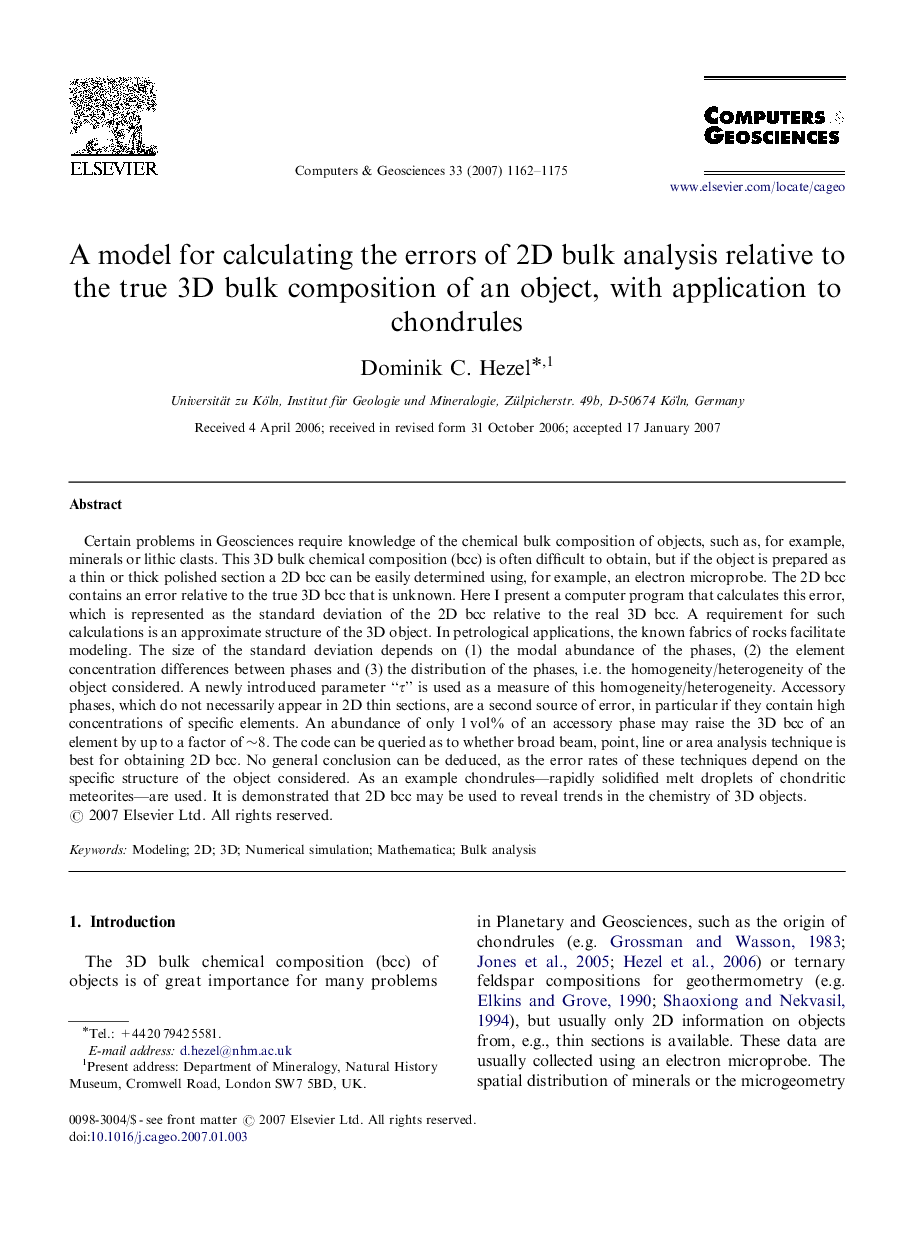| Article ID | Journal | Published Year | Pages | File Type |
|---|---|---|---|---|
| 508440 | Computers & Geosciences | 2007 | 14 Pages |
Certain problems in Geosciences require knowledge of the chemical bulk composition of objects, such as, for example, minerals or lithic clasts. This 3D bulk chemical composition (bcc) is often difficult to obtain, but if the object is prepared as a thin or thick polished section a 2D bcc can be easily determined using, for example, an electron microprobe. The 2D bcc contains an error relative to the true 3D bcc that is unknown. Here I present a computer program that calculates this error, which is represented as the standard deviation of the 2D bcc relative to the real 3D bcc. A requirement for such calculations is an approximate structure of the 3D object. In petrological applications, the known fabrics of rocks facilitate modeling. The size of the standard deviation depends on (1) the modal abundance of the phases, (2) the element concentration differences between phases and (3) the distribution of the phases, i.e. the homogeneity/heterogeneity of the object considered. A newly introduced parameter “τ” is used as a measure of this homogeneity/heterogeneity. Accessory phases, which do not necessarily appear in 2D thin sections, are a second source of error, in particular if they contain high concentrations of specific elements. An abundance of only 1 vol% of an accessory phase may raise the 3D bcc of an element by up to a factor of ∼8. The code can be queried as to whether broad beam, point, line or area analysis technique is best for obtaining 2D bcc. No general conclusion can be deduced, as the error rates of these techniques depend on the specific structure of the object considered. As an example chondrules—rapidly solidified melt droplets of chondritic meteorites—are used. It is demonstrated that 2D bcc may be used to reveal trends in the chemistry of 3D objects.
